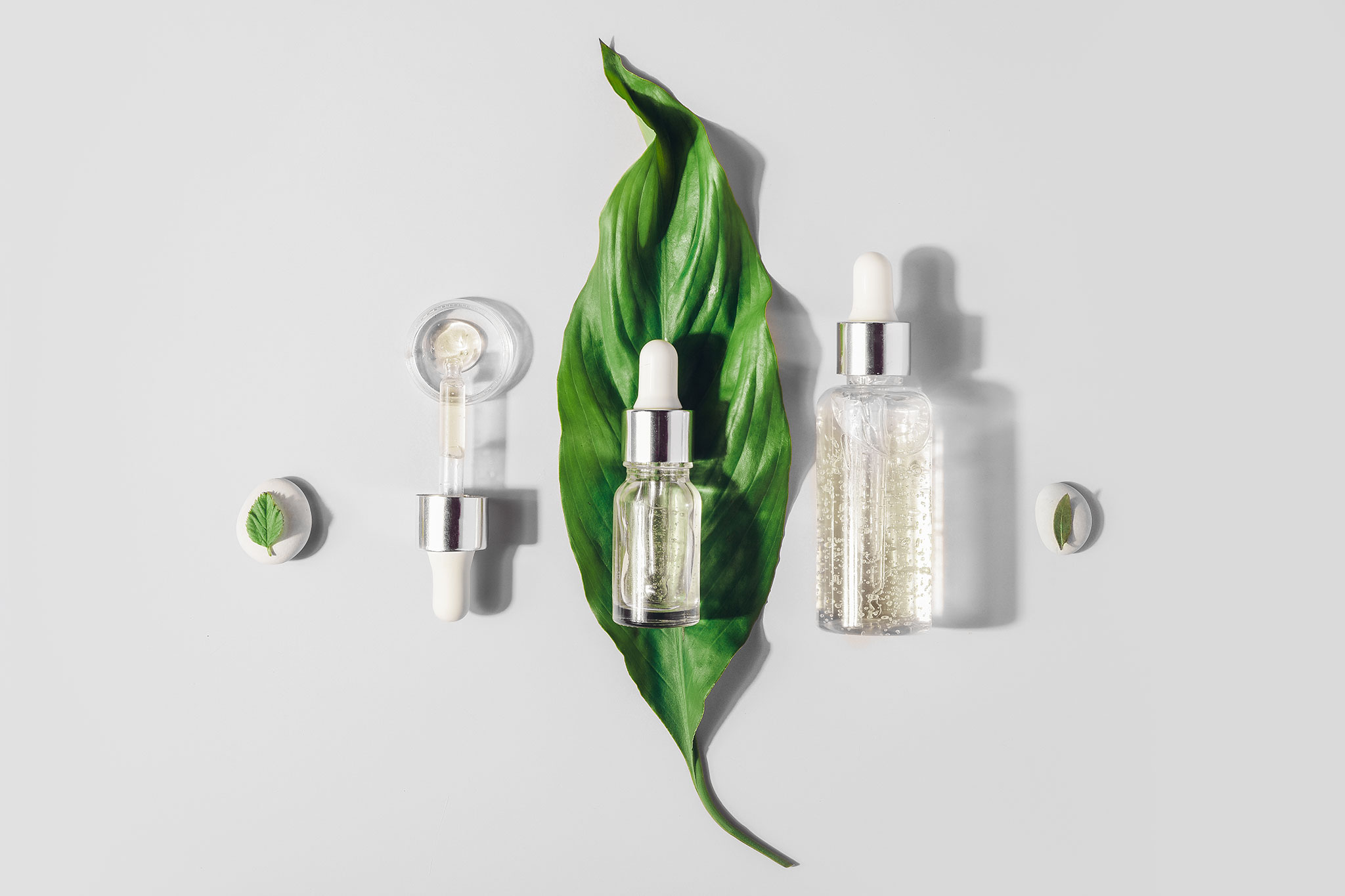The Hubbub Over Hyaluronic Acid, From Serums to Facial Fillers
Why the sudden cult status for this gel-like substance that naturally occurs in your own body? The team at AW gives their two cents, as well as breaking down what hyaluronic acid is, what it does for your skin, how it works, and, whether or not, it’s worth all the hype.

If it seems like you’re suddenly seeing the words “hyaluronic acid” everywhere, well, you kind of are, from the shelves of clinics like AW Plastic Surgery to health stores to makeup counters where it’s a star ingredient in primers and foundation. And people aren’t just applying it topically, they’re injecting and ingesting it. So why the sudden cult status for this gel-like substance that naturally occurs in your own body? The team at AW gives their two cents, as well as breaking down what hyaluronic acid is, what it does for your skin, how it works, and whether or not, it’s as great as it seems.
What is Hyaluronic Acid?
The term “acid” might sound like something you never want to put near your face, but hyaluronic acid is actually not like glycolic, lactic, or salicylic acids. And unlike acid, which we tend to associate with “stripping” properties, hyaluronic acid is a bouncy fluid that naturally occurs in our bodies – it’s what lubricates and acts as a cushioning agent for our joints, nerves, hair, skin, and eyes.
However, what hyaluronic acid is best known for is its extremely high molecular weight, which serves as a magnet for moisture: Just a single gram of the gel-like substance has the impressive ability to hold up to six liters of water. So, when your cells are rich in the stuff, your skin pulls in more hydration, resulting in plumpness and a reduction in fine lines and dullness.
“But like all naturally occurring, skin-boosting things in our body, our production of hyaluronic acid starts to slow down as we age,” explains Rossli Delorey, a nurse practitioner at AW Plastic Surgery. Which is why your supply of the man-made stuff should not.
Why all the Recent Hype Over Hyaluronic Acid?
Hyaluronic acid was actually first discovered in 1934, when two German biochemists first isolated the compound from the vitreous body of a cow’s eye (today, thanks to the latest and greatest biotechnology methods, safer, purer, and more consistent hyaluronic acid can be produced without resorting to animal tissue extracts). While it had been used by athletes to help speed up recovery from sprained ankles and other joint problems, it didn’t become a popular ingredient used in the cosmetics industry until the late ’90s. This was largely a result of an ABC documentary that looked at the residents of Yuzurihara, Japan, reporting that much of the populace over the age of 85 looked far younger, had wrinkle-free skin, flexible joints, and full heads of hair. They attributed this to their low-iron, starchy vegetable-based diet, which – you guessed it – promotes high levels of hyaluronic acid in the body.
How to Use Hyaluronic Acid: Is There Such a Thing as Too Much?

Yes and no. But first, you need to ask yourself “What does hyaluronic acid do?” Hyaluronic acid is a humectant, so when a serum containing the substance is applied to your skin, it acts like a sponge by attracting moisture to boost hydration on the surface of the skin.
So where does that moisture come from? “It draws water out from the deeper layers of the skin, so it’s important to be used in conjunction with a moisturizer to then prevent transepidermal water loss – essentially, keeping all that moisture ‘locked in,’” says Delorey. “If you’re not doing that, your use of hyaluronic acid can actually exacerbate dry skin symptoms because you’re pulling that water to the surface, then losing it. But when used properly, there is no limit to how much hyaluronic acid you can use.”
What Percentage of Hyaluronic Acid Should I Look for in My Skincare Products?
There’s a misconception that your serum needs to contain a high percentage of hyaluronic acid to be effective. But the truth is – given its high molecular weight – just a little bit of the stuff goes a long way.
“Most skincare products contain less than 2% hyaluronic acid,” says Delorey. “This is because they don’t need to in order for it to still be effective. So, you don’t have to stress if you see it at the end of the ingredient list.”
The most important thing to do, in addition to using it properly, is to use it regularly. “When it comes to how often to use hyaluronic acid, the skin has enzymes which break down the compound very quickly – sometimes in less than a day. This means that you have to use it consistently to see results, as its effects are temporary (but still totally worth it),” adds Delorey.
What About Injecting Hyaluronic Acid?
Injectable hyaluronic acid works much like topical hyaluronic acid, meaning it draws out water from within the body to puff out a wrinkle or add volume or structure somewhere. It’s one of the most popular dermal fillers because it is tolerated well (because it’s a natural component of the skin), so the risk of a bad reaction is very low. Juvéderm® and Restalyne are common dermal fillers that use hyaluronic acid derivatives and are injected using a fine needle to various areas on the face, eyes, and lips with effects that are seen immediately.
“Some fillers are more hydrophilic than others and we choose them for specific placement based on this property as well as its rheology,” says Delorey.
As for how long they last, like all cosmetic procedures, they won’t last forever because you have to expect some follow-up maintenance. The skin will eventually absorb the hyaluronic acid, so in order to keep the skin or lips plumped or stave off wrinkles, you will need to have the treatment repeated. On average, hyaluronic acid fillers dissolve naturally over time, and, depending on which filler you choose, the results can stick around from six to 10 months, maybe even a full year. It all really depends on your lifestyle and other factors.
RELATED READING
- Tales from the Chair: Why I Got Lip Injections (Plus 8 Most-Asked Questions About the Procedure Answered)
- How to Make Sure You Never Look “Done” After an Elective Cosmetic Procedure
- 8 Ways to Protect, Maintain & Boost Your Collagen Levels

